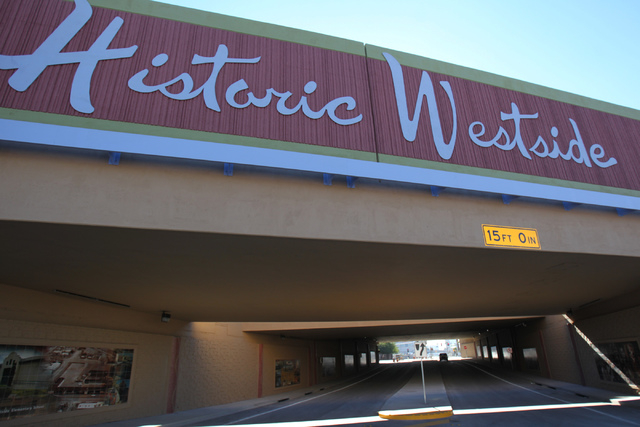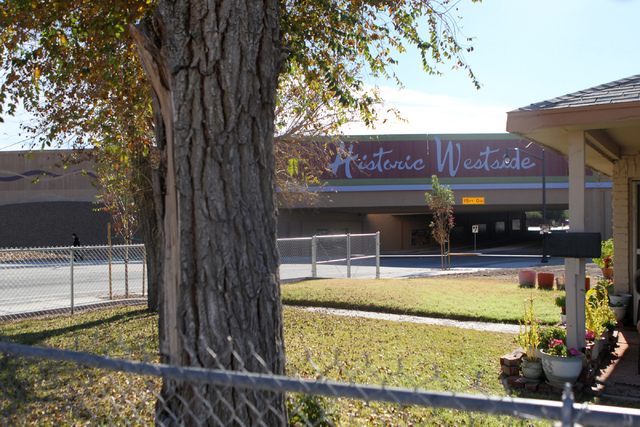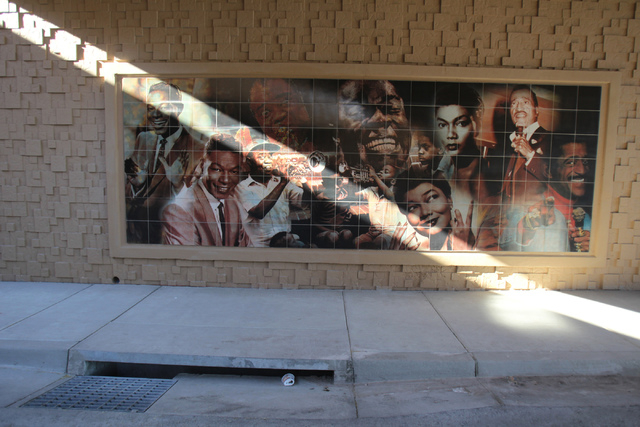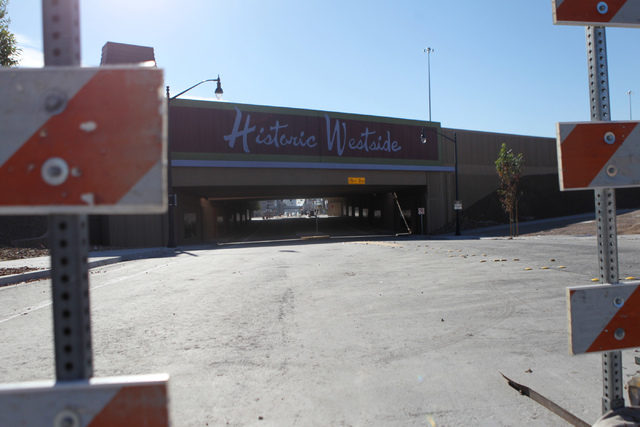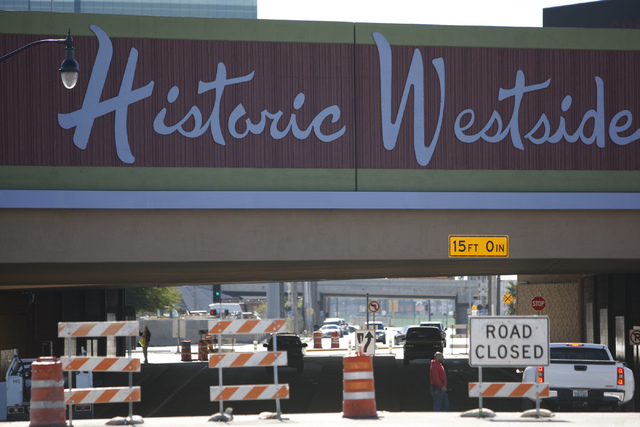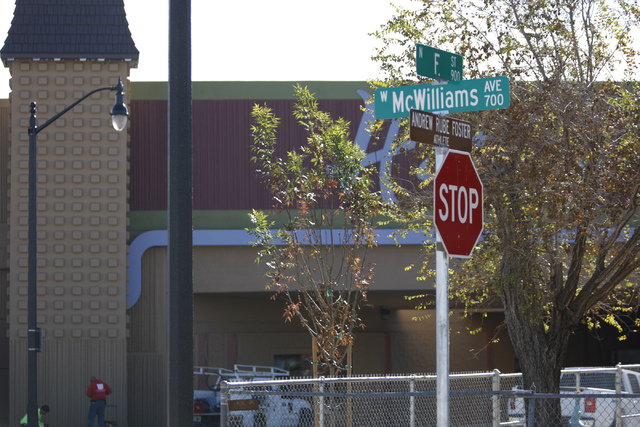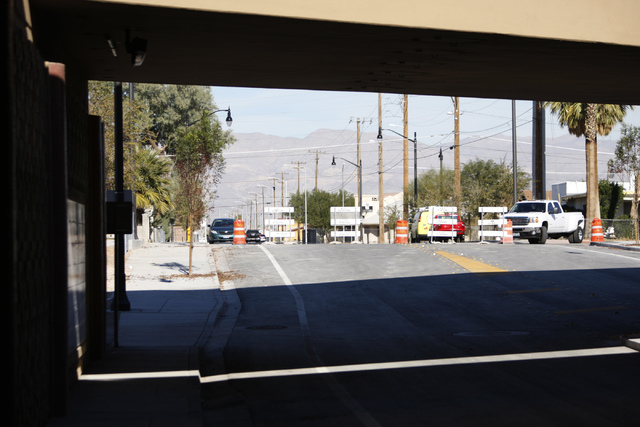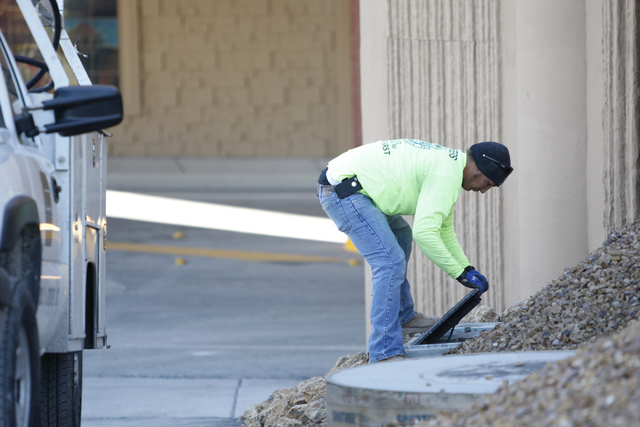Contested F Street link reopens in Las Vegas on Thursday
When it closed in September 2008, the quarter-mile of F Street beneath Interstate 15 was the most controversial roadway in Southern Nevada.
The Nevada Transportation Department was widening I-15 at the Spaghetti Bowl and the plan to close that direct link between historic West Las Vegas and downtown Las Vegas was viewed as an unfortunate but necessary part of the engineering required to widen the freeway.
But to residents of West Las Vegas, the closure was viewed as much more.
It was a symbolic reminder of something they had fought for years in the 1960s — segregation.
The six-year saga of F Street’s role in the history of the city’s racial relations ends today when the road reopens in a 10 a.m. ceremony planned at F and McWilliams Avenue.
The $13.6 million project was a joint effort between the Transportation Department and the city of Las Vegas. Las Vegas Paving was the general contractor for the project; Atkins was engineer of record.
The reopening comes as racial tensions are high nationwide as a result of the shooting of unarmed black teenager Michael Brown in Ferguson, Mo., on Aug. 9 and the chokehold death of Eric Garner, who also was African-American, in Staten Island, N.Y., on July 17.
When it opens to traffic, F Street will have one lane of median-divided traffic between the D Street connector and McWilliams as well as new sidewalks, curbs and gutters, new lighting and landscaping north to Washington Avenue. The corridor is wide enough to easily accommodate vehicle traffic as well as pedestrians and bicycles. A new layer of asphalt provides a smooth surface for motorists.
The underpass also is decorated with a series of 12 interpretive murals depicting scenes of historic significance to the West Las Vegas neighborhood as well as two decorative 50-foot towers resembling the architecture of the historic Moulin Rouge.
“It’s easily the most beautiful underpass NDOT has ever done,” department spokesman Tony Illia said.
Much of that beauty is in the tiled murals that celebrate the contributions of civil rights and community leaders Martin Luther King Jr.; Lubertha Johnson; Charles Kellar; former state Sen. Joe Neal, D-North Las Vegas; and Woodrow Wilson, the first African-American elected to the Nevada Assembly in 1966.
Panels also commemorate the city’s first integrated casino, the Moulin Rouge, and famed Strip entertainers Sammy Davis Jr. and Nat King Cole, among others.
“The project team partnered with the community to develop the panels through numerous meetings,” said Las Vegas City Councilman Ricki Barlow, who represents Ward 5. “It’s very rewarding to see the finished product, realizing the community’s involvement in creating something unique that reflects their social and cultural history.”
But the path to Thursday’s opening was rocky.
The 2008 closure occurred because of potential traffic conflicts at F and the new D Street connector known as City Parkway just south of the underpass. Transportation Department engineers felt there would be no problem closing F Street because there were streets flowing into the downtown area at Martin Luther King Boulevard and Main Street.
Community activists said the Transportation Department was vague about what was planned for F Street and West Las Vegas neighbors said they didn’t learn of the street’s closure until it happened.
“There was an apparent lack of community engagement and transparency,” recalled Rep. Steven Horsford, D-Nev., a former West Las Vegas resident and, at that time, the new majority leader of the state Senate.
Horsford said because community members apparently weren’t notified, he felt it was important to right the wrong.
“The effort to reopen F Street started as a community-led movement that involved (Assemblyman) Harvey Munford, Councilman Barlow and Mayor Carolyn Goodman,” Horsford said. “They just wanted the community to have its access back.”
Horsford said the closure stung because it symbolically smacked of segregation at a time when the downtown Las Vegas environment was brightening with construction of The Smith Center for the Performing Arts, the Lou Ruvo Brain Institute and a new City Hall on the horizon.
West Las Vegas residents Ora Bland and Estella Jimerson and the local chapter of the Rev. Al Sharpton’s National Action Network sued in Clark County District Court seeking to shut down I-15’s widening project until state officials agreed to reopen F Street.
Attorney Matthew Callister, representing Bland and Jimerson, called the F Street closure “the worst incident of race-based segregation” he had seen in Las Vegas.
The lawsuit was filed as a violation of Title VI of the Civil Rights Act of 1964, which prevents discrimination by government agencies. Had the plaintiffs prevailed, Las Vegas faced the penalty of losing federal funding for local projects.
Eventually, cooler heads prevailed.
Horsford helped build bipartisan support to approve legislation to reopen F Street and a bill was passed in 2009. Callister agreed to dismiss the lawsuit if the legislation was signed into law.
The last roadblock was then-Gov. Jim Gibbons, who vetoed the legislation.
“That would be a very expensive part of the transportation infrastructure to change,” Gibbons said at the time. “I’m not excited about spending $70 million when there are alternative accesses.”
Estimates of the cost to reopen F Street ranged from $20 million to $70 million, but the job eventually was done for $13.6 million.
“The F Street reopening brings us back to where we should be: An inclusive city embracing our valued historical Westside and its residents into the heart of downtown,” said Goodman, who is expected to appear at Thursday’s opening. “This has been made possible through improved accessibility, mobility and safety for all area residents.”
“The F Street project reopens a vital cultural and economic corridor for local residents and businesses while creating an iconic new gateway for the Westside,” added Transportation Department Director Rudy Malfabon. “This has been a great collaboration between the state, city and local community.”
Contact Richard N. Velotta at rvelotta@reviewjournal.com or 702-477-3893. Find him on Twitter: @RickVelotta.



